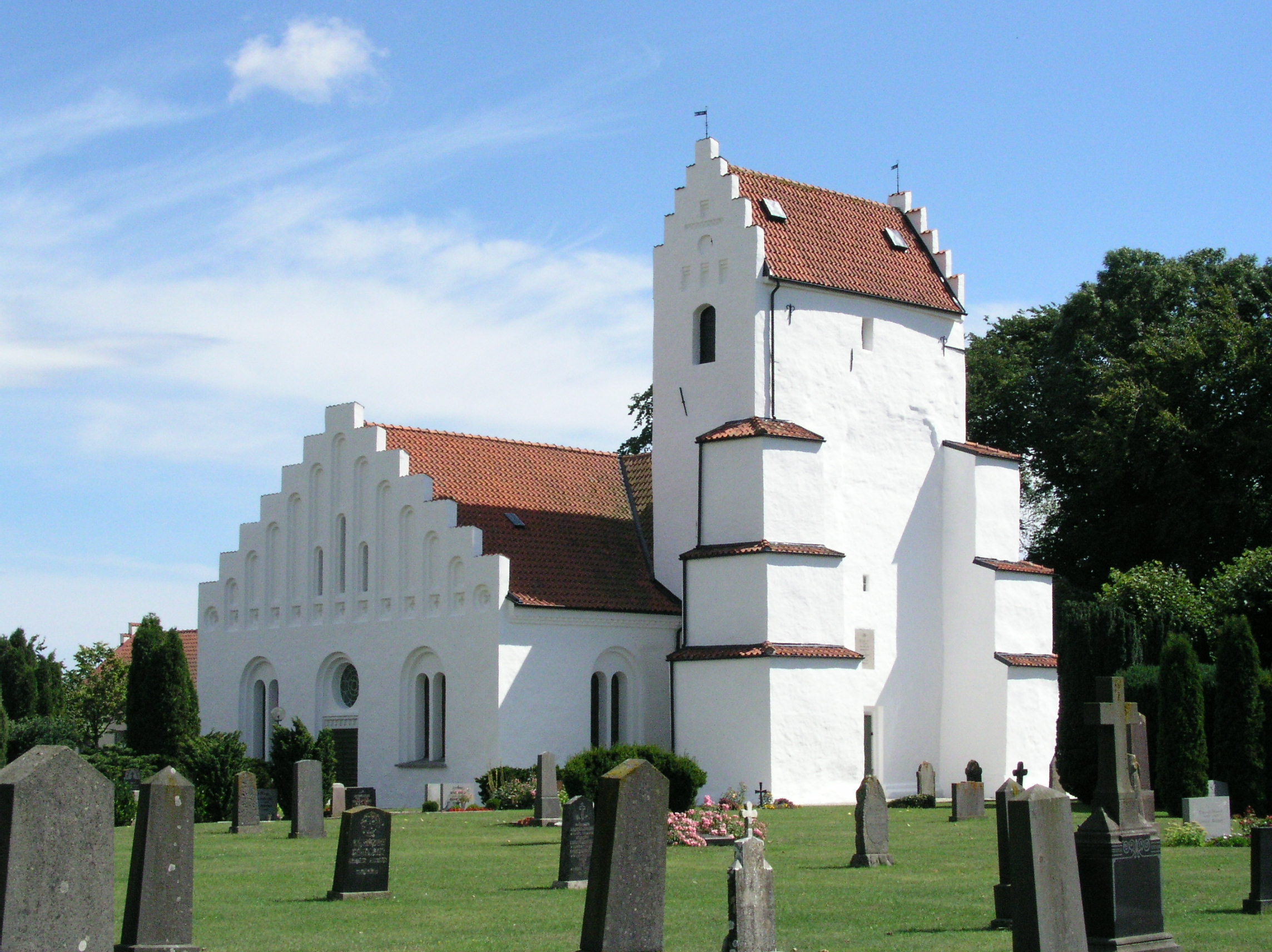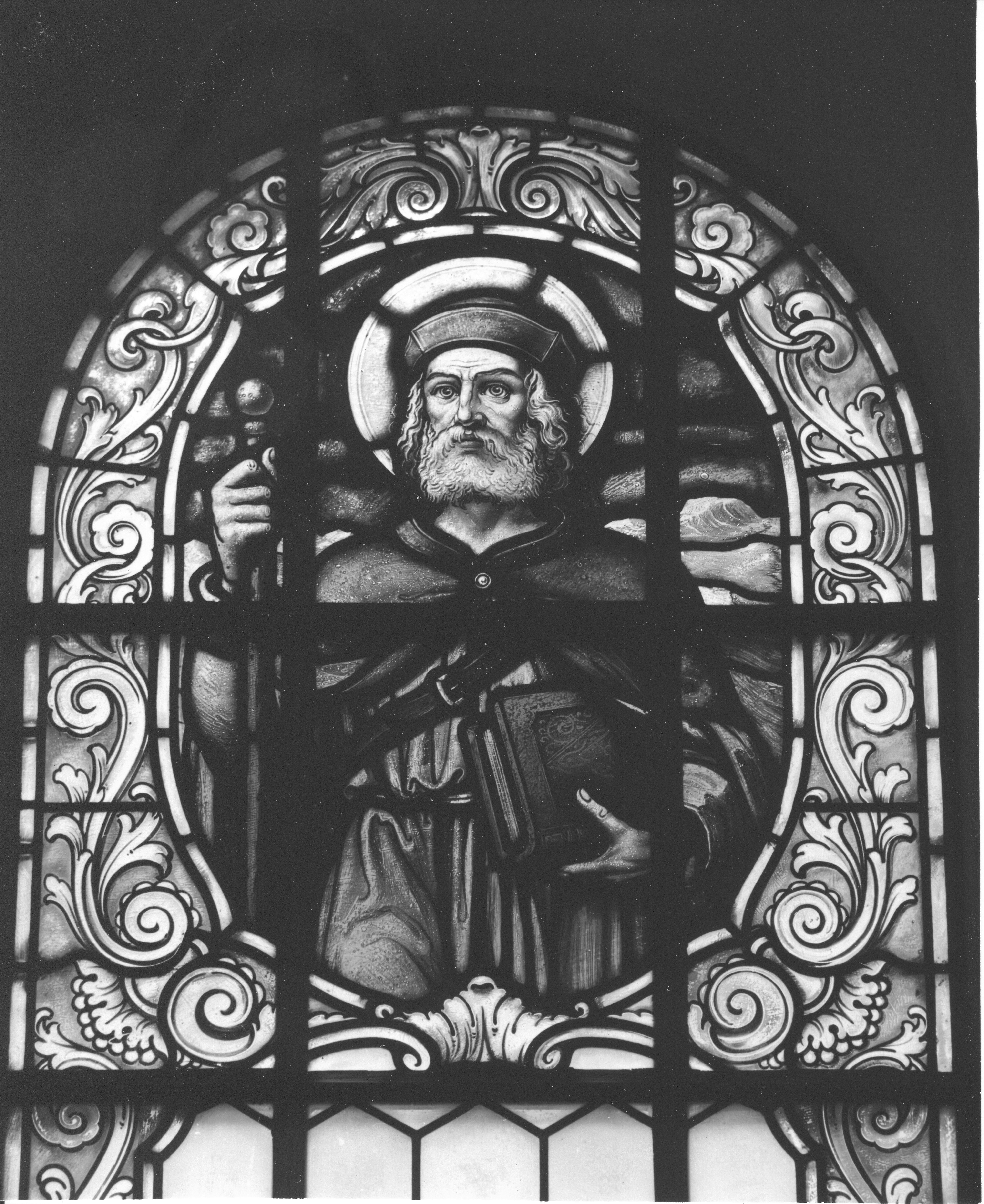|
Master Majestatis
Majestatis ( la, Magister Majestatis Domini, ''The Master of Christ in Majesty'', usually shortened to Majestatis and sometimes referred to as the Tryde Master, fl. second half of the 12th century) was a Romanesque stone sculptor and the creator of several richly decorated baptismal fonts mainly in Scania and on Gotland (present-day Sweden). Life and works The name ''Majestatis'' is a notname assigned to the artist or workshop; it is possible that an atelier rather than a single artist was responsible for the works attributed to Majestatis. Art historian Johnny Roosval coined the name in the 20th century. It derives from a subject often used by the artist, Christ in Majesty sitting on a rainbow and surrounded by a mandorla and angels. No written sources exist about the life or background of the artist, but it has been speculated that Majestatis was trained in Burgundy or Alsace or may have come from there. Majestatis initially seems to have worked in Scania, probably for the loc ... [...More Info...] [...Related Items...] OR: [Wikipedia] [Google] [Baidu] |
Hablingbo Church
Hablingbo Church ( sv, Hablingbo kyrka) is a medieval church in Hablingbo on the Swedish island of Gotland. It is one of the largest churches on Gotland, and dating largely from the 14th century, although the current church building was preceded by a stave church. The stone portals of the church are comparatively richly decorated. It is used by the Church of Sweden and part of the Diocese of Visby. History The earliest church at the site was a stave church, built in the early 12th century at the latest. It was later replaced by a Romanesque stone church, the tower of which still survives in the present building. The nave and choir were completely rebuilt during the 14th century to their present Gothic look. Few alterations have been made since. Several of the medieval furnishings have been removed and placed in museums, however. The altarpiece is Baroque in style and dates from the 1600s, and the pews are neo-Gothic, dating from the 1890s. Architecture The church is one of the lar ... [...More Info...] [...Related Items...] OR: [Wikipedia] [Google] [Baidu] |
Österlen
Österlen () ( da, Østerlen) is a region in the southeast of the Swedish province of Scania (Skåne). Historically, the region was shared between the counties of Kristianstad and Malmöhus for a small part in the southwest, until Skåne County was created in 1997. Österlen includes the municipalities of Simrishamn and Tomelilla and a rural part of Ystad. The towns of Simrishamn and Tomelilla are of very similar sizes, but the Simrishamn municipal population is somewhat larger. Österlen has approximately in between 35 000 to 40 000 permanent inhabitants but plenty of seasonal vacation homes means that the population soars during summer months. The area is a tourist destination known for its natural environment, historic buildings, fishing hamlets, small towns and farmland.Southeast Visit Skåne Geography M ...
|
Simris
Simris is a locality situated in Simrishamn Municipality, Skåne County, Sweden Sweden, formally the Kingdom of Sweden,The United Nations Group of Experts on Geographical Names states that the country's formal name is the Kingdom of SwedenUNGEGN World Geographical Names, Sweden./ref> is a Nordic country located on ... with 211 inhabitants in 2010. References Populated places in Skåne County Populated places in Simrishamn Municipality {{Skåne-geo-stub ... [...More Info...] [...Related Items...] OR: [Wikipedia] [Google] [Baidu] |
Valleberga Church
Valleberga Church is a church in the village of Valleberga, Sweden. It is situated is about 15 miles east of Ystad in Skåne County. It is in the parish of Löderup of the Diocese of Lund. History It was built of limestone in the middle of the 12th century. It is the only known fortified round church in Skåne. Master mason of the church, Carl stenmästare, also built churches on Bornholm, where round churches were common. The baptismal font was cut by the Romanesque artist known today as Majestatis and shows one of the legends about Saint Peter and Paul of Tarsus Paul; grc, Παῦλος, translit=Paulos; cop, ⲡⲁⲩⲗⲟⲥ; hbo, פאולוס השליח (previously called Saul of Tarsus;; ar, بولس الطرسوسي; grc, Σαῦλος Ταρσεύς, Saũlos Tarseús; tr, Tarsuslu Pavlus; .... The pulpit was made in 1619. The altar cabinet dates to the beginning of the 16th century. In 1791, the round church was considerably altered when extensions we ... [...More Info...] [...Related Items...] OR: [Wikipedia] [Google] [Baidu] |
Östra Hoby Church
Östra Hoby Church ( sv, Östra Hoby kyrka) is a medieval Lutheran church built in the Romanesque architecture, Romanesque style. Located 4 km east of Borrby in Skåne County in southern Sweden, it belongs to the Diocese of Lund. The church is noted for its murals and for its sculpted baptismal font."Östra Hoby kyrka" Svenska kyrkan. Retrieved 10 September 2013. History and architecture Built of travertine, the apse and chancel are the earliest parts of the church, dating from the early 12th century. The nave was added in the second half of the 12th century, possibly in connection with an early tower. The two arms of the transept were added much later in 1850.[...More Info...] [...Related Items...] OR: [Wikipedia] [Google] [Baidu] |
Löderup
Löderup is a Urban areas in Sweden, locality situated in Ystad Municipality, Skåne County, Sweden with 550 inhabitants in 2010. Medieval Löderup Church lies in Löderup. References Populated places in Ystad Municipality Populated places in Skåne County {{Skåne-geo-stub ... [...More Info...] [...Related Items...] OR: [Wikipedia] [Google] [Baidu] |
Paris
Paris () is the capital and most populous city of France, with an estimated population of 2,165,423 residents in 2019 in an area of more than 105 km² (41 sq mi), making it the 30th most densely populated city in the world in 2020. Since the 17th century, Paris has been one of the world's major centres of finance, diplomacy, commerce, fashion, gastronomy, and science. For its leading role in the arts and sciences, as well as its very early system of street lighting, in the 19th century it became known as "the City of Light". Like London, prior to the Second World War, it was also sometimes called the capital of the world. The City of Paris is the centre of the Île-de-France region, or Paris Region, with an estimated population of 12,262,544 in 2019, or about 19% of the population of France, making the region France's primate city. The Paris Region had a GDP of €739 billion ($743 billion) in 2019, which is the highest in Europe. According to the Economist Intelli ... [...More Info...] [...Related Items...] OR: [Wikipedia] [Google] [Baidu] |
International Exposition (1867)
The International Exposition of 1867 (french: Exposition universelle 'art et d'industriede 1867), was the second world's fair to be held in Paris, from 1 April to 3 November 1867. A number of nations were represented at the fair. Following a decree of Emperor Napoleon III, the exposition was prepared as early as 1864, in the midst of the renovation of Paris, marking the culmination of the Second French Empire. Visitors included Tsar Alexander II of Russia, a brother of the King William and Otto von Bismarck of Prussia, Prince Metternich and Franz Josef of Austria, Ottoman Sultan Abdülaziz, and the Khedive of Egypt Isma'il. Conception In 1864, Napoleon III issued a decree stating that an international exposition should be held in Paris in 1867. A commission was appointed with Prince Jerome Napoleon as president, under whose direction the preliminary work began. The site chosen for the Exposition Universelle of 1867 was the Champ de Mars, the great military parade ground ... [...More Info...] [...Related Items...] OR: [Wikipedia] [Google] [Baidu] |
Fridolin Of Säckingen
Saint Fridolin of Säckingen, also known as Fridold or Fredelinus, is a legendary Irish missionary, apostle of the Alamanni and founder of Säckingen Abbey on the Upper Rhine. He is also the patron saint of the Swiss canton of Glarus. His oldest ''Vita'' is dated to the 10th or 11th century. Later tradition places the beginning of his mission during the reign of Clovis I (r. 509 – 511), and his death during the reign of Theudebert I (r. 533–548). The date of his death is traditionally given as 6 March in either 538 or 540. Modern historiography has tended to place the founder of Säckingen Abbey in the 7th rather than 6th century, tentatively assuming the existence of a historical Saint Fridolin under Clovis II (r. 639–657) rather than Clovis I. Source The earliest known reference to Fridolin is found in the records of a priest Hatto, towards the end of the 9th century. He made an inventory of the abandoned monastery from fear of the Normans. His list includes a Codex ed ... [...More Info...] [...Related Items...] OR: [Wikipedia] [Google] [Baidu] |





